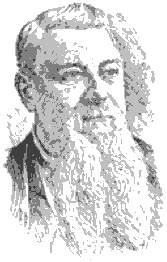미니부네
MiniBooNEMiniBooNE는 중성미자 진동을 관찰하도록 설계된 Fermilab의 실험이다(BooNE는 부스터 중성미자 실험의 약어다). 주로 뮤온 중성미자로 구성된 중성미자 빔은 800t의 광유(초경화 메틸렌 화합물)로 채워진 검출기를 향하고 1,280개의 광전자 증배관이 일렬로 늘어서 있다.[1] 검출기에서 전자 중성미자 이벤트가 과다하면 LSND(액체 Scintillator 중성미자 검출기)결과의 중성미자 진동 해석을 지원할 수 있다.
MiniBooNE는 2002년부터[2] 데이터 수집을 시작해 2017년에도 계속 운영되고 있었다.[3] 2018년 5월 미니부 물리학자들NE 실험은 멸균 중성미자의 존재를 나타내는 가능한 신호를 보고했다.[4]
역사와 동기
태양 중성미자와 대기 중성미자에 대한 실험적인 관찰은 중성미자가 질량을 가지고 있음을 암시하는 중성미자 진동에 대한 증거를 제공했다. Los Alamos 국립 연구소의 LSND 실험 데이터는 표준 모델의 프레임워크에서 다른 중성미자 실험에 의해 측정된 진동 매개변수와 호환되지 않기 때문에 논란이 되고 있다. 표준 모델에 대한 확장이 있거나 실험 결과 중 하나에 다른 설명이 있어야 한다. 게다가 카를스루에에서의[5] KARMEN 실험은 LSND 실험과 유사한 [저에너지] 영역을 조사했지만 중성미자 진동의 징후는 보이지 않았다. 이 실험은 LSND보다 덜 민감했고, 둘 다 맞을 수 있었다.
우주론 데이터는 도델슨 외 연구진이 제공한 95s% 신뢰 한계(99.9%)에서 m < 0.26 eV(0.44 eV)>와 같이 무균 중성미자의 질량에 간접적이지만 오히려 모델 의존성을 제공할 수 있다.[6] 단, 우주 데이터는 겔미니 외 연구원과 같이 서로 다른 가정을 가진 모델 내에서 수용될 수 있다.[7]
MiniBooNE는 LSND 논란이 되고 있는 결과를 통제된 환경에서 명확하게 검증하거나 반박하기 위해 설계되었다.
2007
- 2002년 빔을 켠 후, 2007년 3월 말에 첫 번째 결과가 나왔으며, LSND [저에너지] 영역에서 뮤온 중성미자가 전자 중성미자 진동에 대한 증거를 보여주지 않아 LSND 결과의 단순한 2-중성자 진동에 대한 해석을 반박하였다.[8] 현재 MiniBoo에서 데이터에 대한 보다 진보된 분석을 수행하고 있다.NE 협업; 초기 징후는 무균 중성미자의 존재를 가리키고 있는데,[9] 이는 일부 물리학자들이 대량[10] 또는 로렌츠 위반의 존재를 암시하는 것으로 해석한 효과다.[11]
2008
- MiniBoo의 협업NE는 다른 과학자들과 함께 MicroBooNE라고 불리는 새로운 실험은 살균된 중성미자를 더 연구하기 위해 고안되었다.[12]
2018
- arXiv에 관한 연구와 함께,[3] 이 공동작업은 MiniBoo에서 중성미자 진동 발견을 발표했다.NE는 4.8 시그마 수준에서 확인되며, LSND의 데이터와 결합하면 6.1 시그마 수준에서 확인된다. 이것은 멸균 중성미자의 검출과 알려진 물리학의 상당한 편차를 암시한다.[13] 이 논문의 함축은 뮤온 중성미자 중 일부가 무균 중성미자로 플립한 후 다시 전자 중성미자로 전환한다는 것이다.[14]
참조
- ^ "Detector". MiniBooNE Experiment Details. Fermilab. Retrieved 2015-12-07.
- ^ "MiniBooNE website".
- ^ a b The MiniBooNE Collaboration (May 2018). "Significant Excess of Electronlike Events in the MiniBooNE Short-Baseline Neutrino Experiment". Physical Review Letters. 121 (22): 221801. arXiv:1805.12028. Bibcode:2018PhRvL.121v1801A. doi:10.1103/PhysRevLett.121.221801. PMID 30547637. S2CID 53999758.
- ^ June 2018, Rafi Letzter 01 (2018-06-01). "A Major Physics Experiment Just Detected a Particle That Shouldn't Exist". livescience.com. Retrieved 2021-09-18.
- ^ "KARMEN experiment" (Press release). 3 August 2011. Archived from the original on 5 January 2013.
- ^ S. Dodelson; A. Melchiorri; A. Slosar (2006). "Is cosmology compatible with sterile neutrinos?". Physical Review Letters. 97 (4): 04301. arXiv:astro-ph/0511500. Bibcode:2006PhRvL..97d1301D. doi:10.1103/PhysRevLett.97.041301. PMID 16907563. S2CID 18263443.
- ^ G. Gelmini; S. Palomares-Ruiz & S. Pascoli (2004). "Low reheating temperature and the visible sterile neutrino". Physical Review Letters. 93 (8): 081302. arXiv:astro-ph/0403323. Bibcode:2004PhRvL..93h1302G. doi:10.1103/PhysRevLett.93.081302. PMID 15447171. S2CID 13111683.
- ^ A. A. Aguilar-Arevalo; et al. (MiniBooNE Collaboration) (2007). "A Search for Electron Neutrino Appearance at the Δm2 ~ 1 eV2 Scale". Physical Review Letters. 98 (23): 231801. arXiv:0704.1500. Bibcode:2007PhRvL..98w1801A. doi:10.1103/PhysRevLett.98.231801. PMID 17677898. S2CID 119315296.
- ^ M. Alpert (August 2007). "Dimensional Shortcuts". Scientific American. Archived from the original on 2013-01-24. Retrieved 2007-07-23.
- ^ H. Päs; S. Pakvasa; T.J. Weiler (2007). "Shortcuts in extra dimensions and neutrino physics". AIP Conference Proceedings. 903: 315–318. arXiv:hep-ph/0611263. Bibcode:2007AIPC..903..315P. doi:10.1063/1.2735188. S2CID 6745718.
- ^ T. Katori; V.A. Kostelecky; R. Tayloe (2006). "Global three-parameter model for neutrino oscillations using Lorentz violation". Physical Review D. 74 (10): 105009. arXiv:hep-ph/0606154. Bibcode:2006PhRvD..74j5009K. doi:10.1103/PhysRevD.74.105009. S2CID 6459548.
- ^ M. Alpert (September 2008). "Fermilab Looks for Visitors from Another Dimension". Scientific American. Retrieved 2008-09-23.
- ^ Letzter, Rafi (1 June 2018). "A Major Physics Experiment Just Detected A Particle That Shouldn't Exist". LiveScience. Retrieved 4 June 2018.
- ^ 미국 물리학 연구소에서 새로운 입자를 발견했는가? 폴 린콘, BBC 뉴스 2018년 6월 6일



